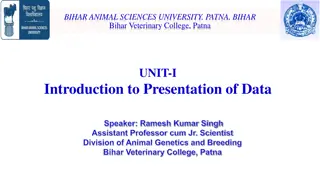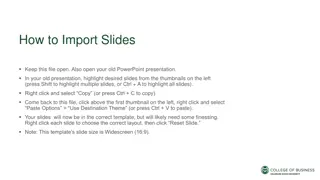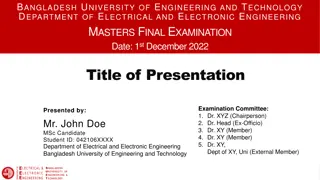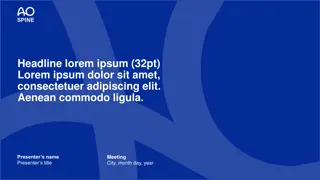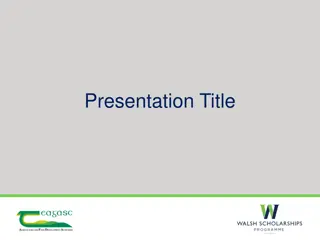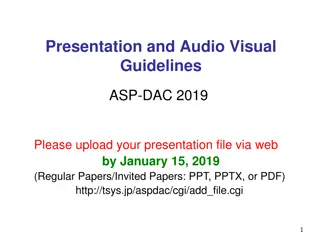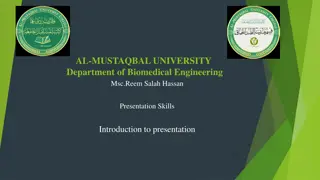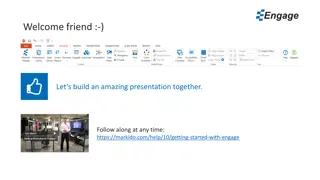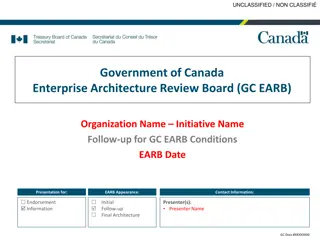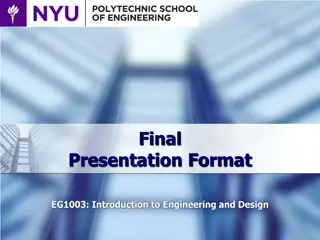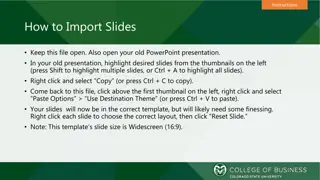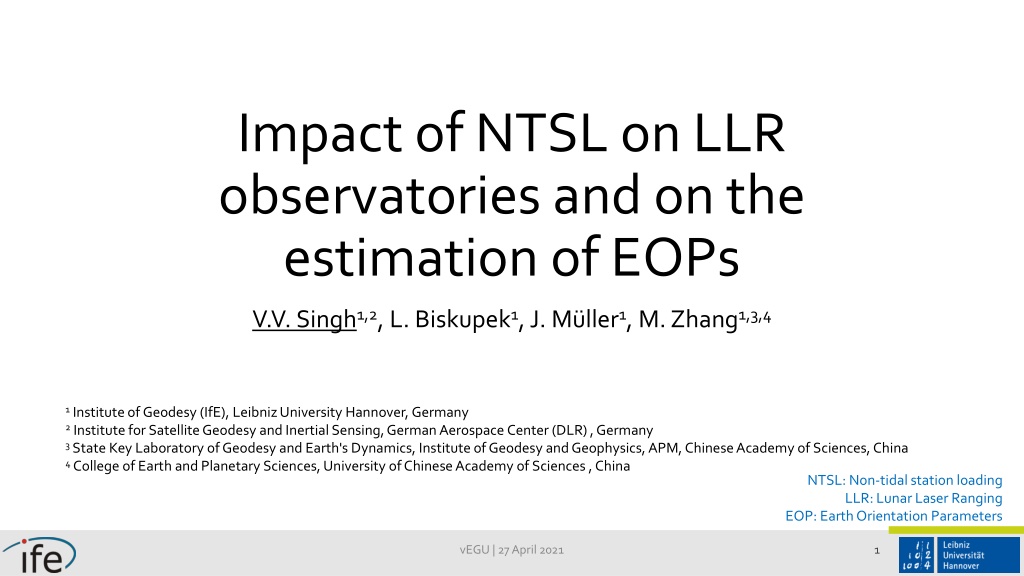
Impact of Non-Tidal Station Loading on LLR Observatories and EOP Estimation
Explore the impact of Non-Tidal Station Loading (NTSL) on Lunar Laser Ranging (LLR) observatories and the estimation of Earth Orientation Parameters (EOPs). Discover how NTSL affects LLR residuals, station coordinates, and annual signals. Gain insights into the improvements in LLR observations with NTSL solutions. Delve into the details provided by V.V. Singh et al. (2021).
Download Presentation

Please find below an Image/Link to download the presentation.
The content on the website is provided AS IS for your information and personal use only. It may not be sold, licensed, or shared on other websites without obtaining consent from the author. Download presentation by click this link. If you encounter any issues during the download, it is possible that the publisher has removed the file from their server.
E N D
Presentation Transcript
Impact of NTSL on LLR observatories and on the estimation of EOPs V.V. Singh1,2, L. Biskupek1, J. M ller1, M. Zhang1,3,4 1Institute of Geodesy (IfE), Leibniz University Hannover, Germany 2Institute for Satellite Geodesy and Inertial Sensing, German Aerospace Center(DLR), Germany 3State Key Laboratory of Geodesy and Earth's Dynamics, Institute of Geodesy and Geophysics, APM, Chinese Academy of Sciences, China 4College of Earth and Planetary Sciences, University of Chinese Academy of Sciences, China NTSL: Non-tidal station loading LLR: Lunar Laser Ranging EOP: Earth Orientation Parameters vEGU | 27 April 2021 1
Principle of LLR Laser pulse from telescope on Earth to reflector on Moon Measurement of round- trip travel time Space segment Five retroreflectors LLR helps in (but isn t limited to): defining coordinate systems & estimating tidal parameters for the Moon testing relativistic parameters estimating Earth Orientation Parameters Ground segment Laser Detector Clock [Murphy, 2013] Murphy, T. W.: Lunar laser ranging: the millimeterchallenge, 2013, Reports on Progress in Physics 76 vEGU | 27 April 2021 2
LUNAR Software Package Within the data modelling in parameter estimation: Standard model follows IERS 2010 conventions: Tidal atmospheric loading (TAL) Tidal ocean loading Solid Earth tides Deformation due to polar motion Ocean pole tides Tropospheric delay Non-tidal loading (NTL) not recommended by IERS LLR observations possible only on clear sky conditions = high atmospheric pressure = TAL + NTAL (non-tidal atmospheric loading) Blue sky effect due to NTAL NTL effect also due to redistribution of masses in oceans (NTOL) and groundwater (HYDL) vEGU | 27 April 2021 3
Results: Station Coordinates and Annual Signal Post fit residuals, OCA station, 08.08.2012 05.10.2018, 5375 NPs % change in WRMS for GFZ and IMLS NTSL solutions compared to the standard solution for all LLR stations NTSL effect: Improvement (smaller values) in LLR residuals with IMLS NTSL Reduced annual signal at OCA station NPs: Normal points Std: Standard vEGU | 27 April 2021 4 For details, refer Singh et. al (2021)
Results: EOP determination* ??? values obtained from the standard solution Absolute changes to ??? values of the standard solution upon addition of the IMLS NTSL solution and the uncertainty of ??? values of the standard solution NTSL effect: Depends on number of NPs, nights, stations Not significant compared to uncertainty *For OCA IR data, 232 nights (> 10 NPs per night) vEGU | 27 April 2021 5
Conclusions NTSL (all loadings) added to LLR analysis from IMLS and GFZ from 1980 present EOP determination (this study, UTonly) from LLR as corrections to IERS C04 series Corrections for 232 nights (nights with > 10 NPs per night) Range of corrections 150 ?s (standard solution) Uncertainty of corrections up to 60 ?s Mean (uncertainty of corrections) = 17.79 ?s, Std. dev. = 10.17 ?s Effect of NTSL on corrections (compared to standard solution) 60 ?s NTSL effect less than uncertainty (of standard solution) for 71.55% nights (IMLS) and 78.02% nights (GFZ) IMLS: Mean*= 12.18 ?s, Std. dev.*= 11.44 ?s GFZ: Mean*= 9.94 ?s, Std. dev.*= 8.52 ?s Not recommended to be added for EOP determination UTdetermination: LLR to verify VLBI results Std. Dev.: Standard Deviation *of absolute change when adding NTSL in UTcalculation, compared to standard solution vEGU | 27 April 2021 6
References and Acknowledgement Biskupek, L. (2015).Bestimmungder Erdorientierungmit Lunar Laser Ranging. Ph.D. thesis Leibniz University Hannover. https://doi.org/10.15488/4721 Singh, V.V., Biskupek, L., M ller, J., & Zhang, M. (2021).Impcatof non-tidal station loading in LLR. Advances in Space Research. https://doi.org/10.1016/j.asr.2021.03.018 Current LLR data are collected, archived, and distributed under the auspices of the International Laser RangingService (ILRS)(Pearlmanet al.,2019). This research was funded by the German Aerospace Center's (DLR) Institute for Satellite Geodesy and Inertial Sensing, and Deutsche Forschungsgemeinschaft (DFG, German Research Foundation) under Germany s Excellence Strategy EXC 2123 QuantumFrontiers, Project-ID 390837967. Further financial supports were from the Strategic Priority Research Program of the Chinese Academy of Sciences (grant nos. XDB23030100 and XDA15017700) and the National Natural Science Foundation of China (project no. 41704013). Pearlman, M. R., Noll, C. E., Pavlis, E. C., Lemoine, F. G., Combrink, L.,Degnan, J. J., Kirchner, G., & Schreiber, U. (2019). The ILRS: approaching20 years and planning for the future. Journal of Geodesy,93(11), 2161 2180. doi:10.1007/s00190-019-01241-1. 7
Thank you! vEGU | 27 April 2021




